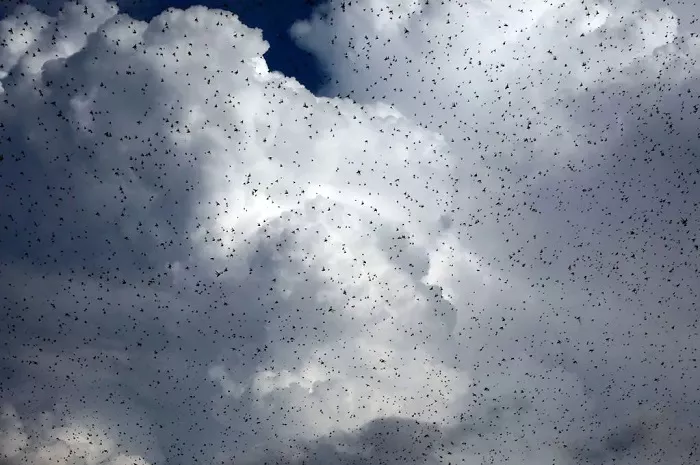Scientists from Tel Aviv University have made a significant breakthrough in understanding an age-old mystery referenced in the Bible: the formation of massive, crop-destroying locust swarms. The research team has delved into the factors that trigger these typically solitary and harmless insects to undergo a dramatic behavioral shift and gather into vast, migrating swarms, a phenomenon that has long puzzled both scientists and agricultural experts.
Locust swarms have been wreaking havoc on crops and causing famines since biblical times, with the Book of Exodus describing locusts as the eighth of ten plagues inflicted on Egypt. The scripture recounts how locusts would cover the ground, making it invisible, and devour everything left after hail, including every tree in the fields. The researchers at Tel Aviv University have discovered that the gut bacterial composition, or microbiome, of a locust undergoes significant changes when the insect becomes part of a larger group, as reported by the Mirror US.
A specific type of bacteria called Weissella, which is almost non-existent in the microbiome of solitary locusts, becomes prevalent during the insect’s “gregarious phase,” when they swarm. The study utilized a custom-built model to monitor changes in the Weissella bacteria and found that swarming allows the bacteria to spread and infect a large number of locusts, providing a clear evolutionary advantage. Prof. Amir Ayali, who led the study, stated, “Our findings do not definitively prove that the Weissella bacteria are responsible for the swarming and migration of locusts. However, the results suggest a high probability that the bacteria play a crucial role in inducing this behavior—a hypothesis that has never been proposed before.”
The implications of these findings could be substantial for the countless people, animals, and plants worldwide that are still threatened by locust outbreaks. Ayali noted, “We hope that this new understanding will drive the development of new means for combating locust outbreaks.” Over the past three years, large areas of Africa, India, and Pakistan have been severely affected by locust swarms. According to Locust Watch, a division of the United Nations’ Food and Agriculture Organization, the Desert Locust (Schistocerca gregaria) is the most destructive migratory pest in the world. These insects are voracious eaters, consuming their own weight in food per day and targeting food crops and forage. A single swarm can consume the same amount of food in one day as 35,000 people.
The study from Tel Aviv University was published last month in the peer-reviewed science journal, Environmental Microbiology.


